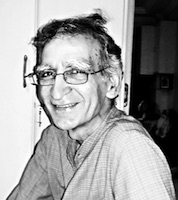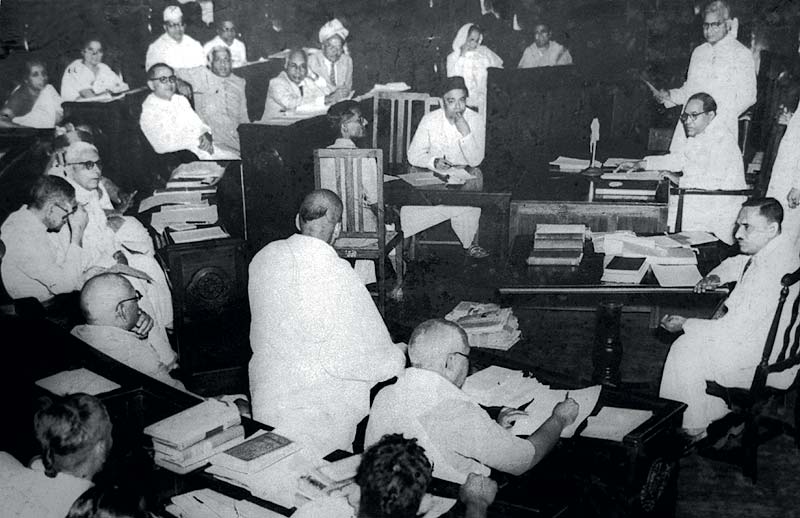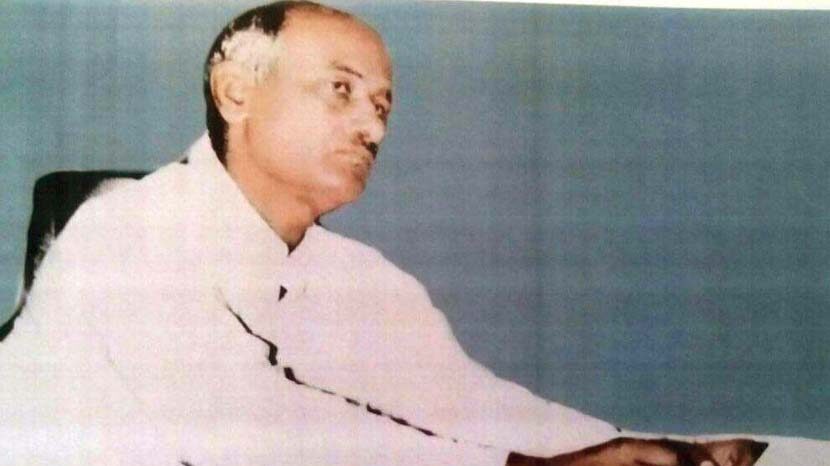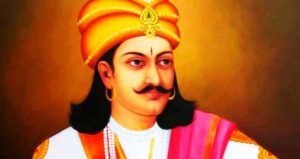
Communal politics uses the past to make inroads into people’s minds in the present. In India, it has used medieval history to present Muslim kings as “aggressors due to whom Hindu society had to suffer”, and now it is distorting ancient history to undermine Buddhism vis-à-vis Brahmanism.
The historical figure that the communal forces are targeting is Emperor Ashoka. Incidentally, Nobel Laureate Amartya Sen regards Ashoka and Akbar as the two of the greatest emperors to have ruled India. A publication by the RSS progeny, Rajasthan Vanvasi Kalyan Parishad, claims that it was due to Ashoka’s conversion to Buddhism and his promotion of ahimsa that India became vulnerable to foreign invaders. It also goes on to say that those followers of Buddhism under Ashoka played a seditious role and that they assisted Greek invaders to destroy the “Vedic religion” and restore Buddhism. When they say “Vedic religion”, they actually mean Brahmanism.
Interestingly, the article says Ashoka was a great ruler until he embraced Buddhism, while most experts have shown that his humane policies that made him a great emperor belonged to the time after he embraced Buddhism. There are many components of this misinformation that has been concocted according to the political requirement of brahmanical Hinduism, one of them being India’s supposed existence since time immemorial. One understands that the idea of India as a nation state emerged during the freedom struggle. The earlier formations were kingdoms and empires. The boundaries of these kingdoms were not fixed and depending on the strength of the army and its fortunes in the battlefield, kings were expanding their area of rule or retreating into smaller areas or even getting decimated at times. Even before Ashoka came to power Alexander had attacked India. Such forays of kings into other territories are not unknown. The Maurya Empire marked one of the most significant phases in the subcontinent’s past.
Many dynasties have ruled large parts of the subcontinent, but no single ruler has ruled the whole of what is India today. So, then, why is Ashoka being targeted today? Ashoka was of the Maurya lineage and succeeded Bindusara. Chandragupta Maurya had built the empire and Ashok’s major deed was to annex Kalinga (modern Orissa). This bloody battle is said to have left Ashoka shaken, so much so that he decided to embrace Buddhism. Thus, the transformation of an aggressive, insensitive king to a humane person began. He undertook measures for welfare of the people, opposed Brahmanical rituals and opened the gates of his palace to listen to the woes of his subjects. Inspired by the teachings of Buddhism he started to work towards a compassionate state – a guardian state.
His edicts carved on pillars and stones, which are vast in number, tell us about his ideas and polices. The image of a very compassionate king emerges from these impressive norms being introduced in the 3rd century BC. What is remarkable is that though he embraced Buddhism he accepted diversity as the norm of society. One of his edicts says that a ruler must accept the diversity of his subjects’ beliefs. On the other hand, he did transform Buddhism into a world religion. His ideas spread not by force but through moral appeal and persuasion. His message was to reduce suffering and to pursue peace, openness and tolerance. This is why he is called “Ashoka the Great”, contrary to the claim that it was his pre-conversion accomplishments that made him great.
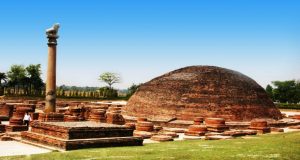 Ashoka’s was the largest empire in the history of the subcontinent. His Dhamma was a moral code for the ruler as well as for the subjects. His Rock Edict XII is relevant even today. It is a call for religious tolerance and civility in public life – “restraint in speech”, “not praising one’s own religion or condemning the religion of the others without good cause … Contact between religions is good [Sunil Khilnani, Incarnations; India in 50 Lives, page 52].” “He did not foist his faith, Buddhism, on his subjects … He is important in history for his policy of peace, non-aggression and cultural conquest [R.S. Sharma, Ancient India, NCERT, 1995, 104].” Ashoka’s principles of justice and non-violence inspired the leaders of freedom movement. He symbolized cultural and religious pluralism, which were central to the ideology of Gandhi and Nehru in particular. His symbols of four lions adorn Indian currency and the wheel has become part of the Indian flag.
Ashoka’s was the largest empire in the history of the subcontinent. His Dhamma was a moral code for the ruler as well as for the subjects. His Rock Edict XII is relevant even today. It is a call for religious tolerance and civility in public life – “restraint in speech”, “not praising one’s own religion or condemning the religion of the others without good cause … Contact between religions is good [Sunil Khilnani, Incarnations; India in 50 Lives, page 52].” “He did not foist his faith, Buddhism, on his subjects … He is important in history for his policy of peace, non-aggression and cultural conquest [R.S. Sharma, Ancient India, NCERT, 1995, 104].” Ashoka’s principles of justice and non-violence inspired the leaders of freedom movement. He symbolized cultural and religious pluralism, which were central to the ideology of Gandhi and Nehru in particular. His symbols of four lions adorn Indian currency and the wheel has become part of the Indian flag.
It was not the lack of military might that brought down the Maurya Empire. After Ashoka’s death, the empire lasted 50 more years, although in 205 BC Greek Emperor Antiochus attacked from the north-west and established his rule in parts of today’s Punjab and Afghanistan. Ashoka and his successors faced bigger threat from within the empire – from the brahmanical reaction to the spread of Buddhism. Ashoka had imposed a ban on animal slaughter for rituals. This led to reduction in the income of Brahmins and the spread of Buddhism led to the erosion of Varna and caste system.
These changes led to a counter-revolution. Pushyamitra Shung, a Brahman, the chief commander of Brihadrath, who was Ashoka’s grandson, led the counter-revolution. He killed the emperor and founded the Shunga dynasty in Sindh part of Ashoka’s empire. Buddhism was on the wane after the killing of Brihadrath. Ambedkar writes, “Emperor Ashoka proclaimed a complete ban on killing animals. So, nobody engaged Brahmans to perform rites and rituals. The Brahman priests were rendered jobless. They also lost their former importance and glory. So the Brahmans revolted against the Maurya Emperor Brihadrath under the leadership of Pushyamitra Shung, a samvedi Brahmin and the army chief of Brihadrath [Writings and Speeches, Vol 3 page 67].” Eighth century later, Shankara led the ideological battle against the philosophy of Buddhism that urged the people to focus on the life in this world. Shankara’s philosophy called this world an illusion and restored Brahmanism. Buddhism was erased from this land around 1200AD.
So why is Ashoka’s reign coming under criticism now? Ashoka’s embracing of Buddhism was a setback to the brahmanical system. Brahmanism is the dominant part of the Hindu religion as understood today. Ashoka talked of non-violence and promoted pluralism, which go totally against the Hindu nationalist agenda of sectarian nationalism in which violence is part of the politics. Hindu nationalists want to promote neo-brahmanical values. So on the one hand, there is the attempt to co-opt Dalits and on other hand the aim is to keep the ideological message of a social hierarchy loud and clear. Hence, the symbols of the ideology of casteless Buddhism and its accompanying respect for pluralism and peace are being attacked under the garb of a concern for the “weakening of India” due to non-violence. Maurya Empire did not belong to the age of nation states. Empires rose and fell due to social and political factors of the time. Despite adopting non-violence, the Maurya Empire remained for 50 years after Ashoka died. It was in fact weakened by the brahmanical counter-revolution. The forays of communalists into ancient Indian history and the criticism of Ashoka are an attempt to denigrate Buddhist values.
